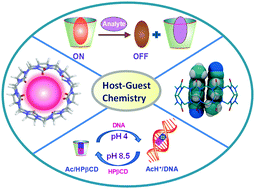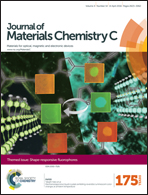Supramolecularly assisted modulations in chromophoric properties and their possible applications: an overview
Abstract
In this article our aim is to review the supramolecularly assisted modulations in the properties of the organic chromophoric dyes, on their interactions with the macrocyclic host molecules, focusing on the possible uses of such modulated dye properties in different applications. We restrict ourselves on the modulations of two important properties of the chromophoric dyes, namely the fluorescence characteristics and the prototropic behavior, the properties that usually undergo large changes through host–guest inclusion complex formation of the dyes with the macrocyclic host molecules and show great prospects for their applications in diverse areas like sensors, catalysis, functional materials, electronic devices, pharmaceuticals, drug formulations, drug delivery, nanomedicines, and many others. To restrain the length of the article, our discussion has also been restricted to only two types of macrocyclic molecules, namely cyclodextrin (CD) and cucurbit[n]uril (CBn) hosts, that are realized to be most promising cavitand molecules with regard to their influence in modulating the dye properties leading to their applications in the aforementioned areas. We have considered suitable examples from the dye–CD and dye–CBn systems as reported in the literature by different research groups including ours to substantiate the discussions on different aspects of the macrocyclic hosts and those on the modulations of the fluorescence and acid–base properties of the organic chromophoric dyes, bringing out their possible applications in different areas, as have been the main objectives of the present review. We strongly feel that this review article will showcase the titled theme, i.e. the supramolecularly assisted modulations in the properties of the chromophoric dyes, which can lead to different useful applications of the supramolecular host–guest systems, highlighting the immense prospects of such studies to explore the versatility of the supramolecular host–guest assemblies for their applications for the benefit of the mankind.

- This article is part of the themed collection: Shape-Responsive Fluorophores

 Please wait while we load your content...
Please wait while we load your content...